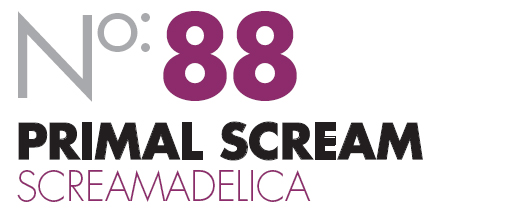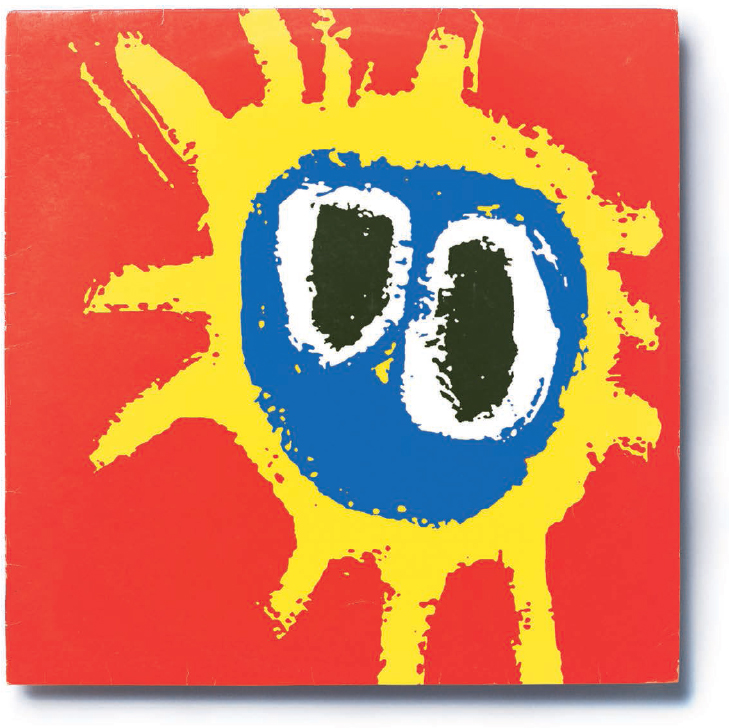
Creation
Produced by The Orb, Hypnotone, Jimmy Miller, Hugo Nicolson and Andrew Weatherall
Released: September 1991
TRACKLISTING
01 Movin’ On Up
02 Slip Inside This House
03 Don’t Fight It, Feel It
04 Higher Than The Sun
05 Inner Flight
06 Come Together
07 Loaded
08 Damaged
09 I’m Comin’ Down
10 Higher Than The Sun (A Dub Symphony In Two Parts)
11 Shine Like Stars
The British independent music scene was on its last legs by the end of the 1980s. Anyone who could break new ground had either departed the underground or simply split up, and all that was left were the imitators. Stagnation and calcification were the order of the day, as twee melancholy and ’60s dogma held sway, and the only hope for new impetus was far across the Atlantic.
That Primal Scream was the band who would not so much change this status quo as detonate expectations and put them back together in three dimensions, would have initially seemed ludicrous. Formed around one-time Jesus and Mary Chain drummer, Bobby Gillespie, almost a decade prior, the group had moved through line-ups, influences and degrees of quality at a fast rate without distinguishing themselves. They’d been jangle pop exponents and rock & roll revivalists and neither phase had felt real or lasting.
But if their sound was shaky, the aesthetic was rock solid: punk outlook, an appreciation of black music’s history and a convert’s dedication. When the acid house and rave scene took off in England, brought back from Ibiza in Spain with DJs and pills, Primal Scream were primed to synthesise it with guitar, bass and drums. It was influential DJ Andrew Weatherall, a friend of the band, who would remix a tune – ‘I’m Losing More Than I Ever Had’ – from their self-titled second album, and create the transformative single ‘Loaded’ with drum loops and B-movie samples. But it was the vast, kaleidoscopic Screamadelica that would define the moment.

Recorded on the run, with a collaborative mindset between the band and various producers and mixers, Screamadelica turned out to be an epochal release. The songs were an invocation to a chemical generation, and an implicit declaration that the seemingly endless Conservative party rule begun by Margaret Thatcher was no longer to be feared. The album made the case for a new youth culture, and chemicals were an explicit element. ‘Don’t Fight It, Feel It’ was one title, ‘Higher Than the Sun’ another; on a swirling cover of 13th Floor Elevators’ ‘Slip Inside This House’, where psychedelia met Italo House, Gillespie would repeatedly sing, ‘trip inside this house’.
Dance music became a form of faith on the album, an impression bolstered by samples that extolled music’s back catalogue as a gateway to spiritual redemption. The songs – which, aside from the 13th Floor Elevators cover, were written by Gillespie, Robert Young and Andrew Innes – could summon dancefloor delerium, reaching joyous bliss on the likes of the seven-minute ‘Don’t Fight It, Feel It’, where Denise Johnson takes the lead vocal from Gillespie and sings of getting high and dancing all night long.
But it was the composition, which offset the sweat and the club kid solidarity, that made Screamadelica more than a mere turning point. The hushed, Lou Reed meets Sly Stone vibe of ‘I’m Comin’ Down’ was a ballad for the morning after, while the tender country-rock of ‘Damaged’ could have been an outtake from an early ’70s Rolling Stones session (incidentally, the same person was behind the desk, in the form of Jimmy Miller).
More than anything, however, Screamadelica just kept finding new frontiers and declaring them open. The album’s fulcrum is the astral transcendence of ‘Higher Than the Sun’, a song that proves that in space everyone can hear you dream. The arrangement’s spectral breakdown and reverent swell is gorgeously otherworldly, and it made clear that Primal Scream hadn’t just seen the light, they’d become one with it. Gillespie’s dreamy vocal, less a boast than a promise, celebrated their breakthrough. ‘What I got in my head,’ he sang, ‘you can’t buy, steal or borrow’.